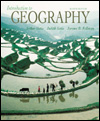Web Page Questions: Answer the following questions using the web pages listed in the chapter. 1. Energy Information Administration - http://www.eia.doe.gov/emeu/aer a. In 1998, what renewable source provided the most energy to the U.S.? _______________________________________________________________________________ b. How did this amount compare to the amount of energy obtained from fossil
fuels? _______________________________________________________________________________ _______________________________________________________________________________ c. What is the only renewable energy source used for transportation in the
U.S.? How is it used? ________________________________________________________________________________ ________________________________________________________________________________
2. Savannah River Site - http://www.srs.gov/ a. When and why was the Savannah River Site developed? ___________________________________________________________________________________ ___________________________________________________________________________________ ___________________________________________________________________________________ b. How much high level waste has been produced at this site? ____________________________________________________________________________________
Problems: Sources of Energy in Anglo America Canada and the United States import much of their energy sources from other
nations, particularly in the form of petroleum. There are, however, substantial
deposits or sources of energy reserves found throughout North America. On the
map that follows, plot the locations of the following energy sources. The information
needed to do this can be found in your text. Use the symbol system given below.  <a onClick="window.open('/olcweb/cgi/pluginpop.cgi?it=jpg::Symbol System::/sites/dl/free/0072367229/9471/image11_01.jpg','popWin', 'width=580,height=90,resizable,scrollbars');" href="#"><img valign="absmiddle" height="16" width="16" border="0" src="/olcweb/styles/shared/linkicons/image.gif">Symbol System (7.0K)</a>Symbol System <a onClick="window.open('/olcweb/cgi/pluginpop.cgi?it=jpg::Symbol System::/sites/dl/free/0072367229/9471/image11_01.jpg','popWin', 'width=580,height=90,resizable,scrollbars');" href="#"><img valign="absmiddle" height="16" width="16" border="0" src="/olcweb/styles/shared/linkicons/image.gif">Symbol System (7.0K)</a>Symbol System Briefly describe the spatial pattern of the distribution of these sources
of energy, and from your understanding of earth building processes discussed
in Chapter 3, explain this spatial pattern. ____________________________________________________________________________________ ____________________________________________________________________________________ ____________________________________________________________________________________ ____________________________________________________________________________________ ____________________________________________________________________________________  <a onClick="window.open('/olcweb/cgi/pluginpop.cgi?it=gif::North America::/sites/dl/free/0072367229/9471/image11_02.gif','popWin', 'width=472,height=473,resizable,scrollbars');" href="#"><img valign="absmiddle" height="16" width="16" border="0" src="/olcweb/styles/shared/linkicons/image.gif">North America (106.0K)</a>North America <a onClick="window.open('/olcweb/cgi/pluginpop.cgi?it=gif::North America::/sites/dl/free/0072367229/9471/image11_02.gif','popWin', 'width=472,height=473,resizable,scrollbars');" href="#"><img valign="absmiddle" height="16" width="16" border="0" src="/olcweb/styles/shared/linkicons/image.gif">North America (106.0K)</a>North America
Critical Thinking Questions - Scenery has been described as a valuable natural resource. Discuss this
statement.
- Throughout the 20th century huge hydroelectric power projects
in Egypt, Turkey, China and Canada have been both supported and opposed by
environmentalists and social scientists. Discuss the benefits of such projects
and the detriments to present areas affected by its dam and reservoir.
- Figure 11.22 is a photograph of a wind farm. Discuss the criteria needed
to make it a successful operation.
- The population density map in Chapter 6 and the soil fertility map in this
chapter are strikingly similar. Discuss soil fertility as a location factor
for settlement in general and high-density settlement in particular. Also
comment upon soil fertility's relation, historically, to industrialization
and urbanization.
- Discuss resource management and sustainable development as coexisting concepts.
| 


 2002 McGraw-Hill Higher Education
2002 McGraw-Hill Higher Education
